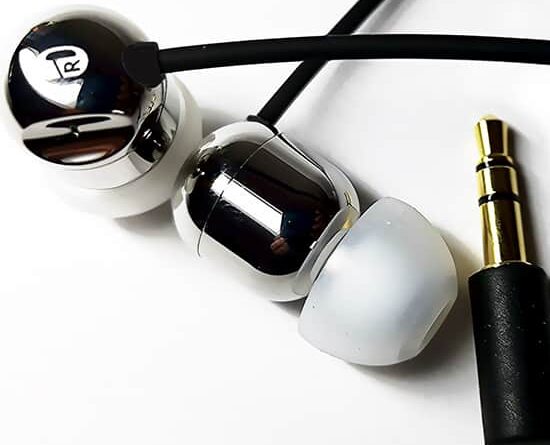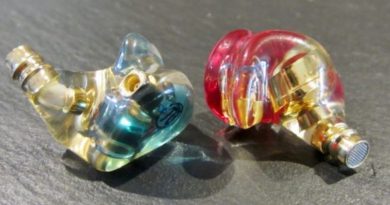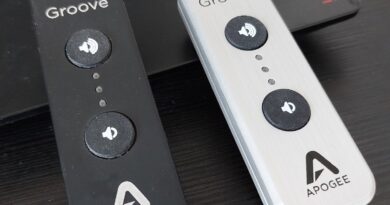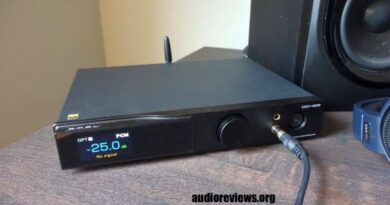Intime Sora 2 – Clean Energetic Musicality
Well, you know: I do have a passion for final’s IEMs. First of all about their sound delivery, of course, but also about the technological effort they endure on their development, and share in good details with their customers. Is that a unique case, or maybe a tendency – a sort of “regional school” ? Is final’s attitude – and hopefully good result – common to other Japanese audio manufacturers?
Intrigued by the question I recently conceded myself a go at a couple of other Made-in-Japan models, one of which is what I’m talking about today: Intime Sora 2.
In this Article
Intime Acoustic, a.k.a. Ozeid Co., a.k.a O2aid.com…
Intime Acoustic is a brand owned by Ozeid Co., Ltd., a quite young (2016-founded) Takasaki City (JPN) based company. Its main business is actually not manufacturing, but consulting.
The owner and key developer mr Yoshiyuki Watanabe has 35+ years of experience on devices and applications that use piezoelectric materials.
Rotate his company name “ozeid” (or even better its web domain name “o2aid”) by 180°. What do you read ? 🙂
That said, mr Watanabe also decided to deliver some of his competence in form of earphones, targeting young users – young like his children – aiming to convey (in his own words) “the good sound of Japan“.
Well I’m more the age of mr Watanabe than of his children, but this all is anyhow more and more intriguing, isn’t it ?
Key technologies
The model I got is called “Sora 2”, quite evidently the second generation of the model previously released under the name of “Sora”.
Similarly to other models in Intime lineup, Sora 2 is based on a dual-driver system including a 10mm dynamic driver, and a somewhat special ceramic tweeter taking care of the upper treble / top octave end.
A number of very interesting details are available regarding the technology inside Sora 2, let me summarise what the main claims are.
1 – “Vertical Super Tweeter”
Adopted on Intime’s TOTL Ti3 model – VST is made of some sort of special laminated ceramics, instead of the most commonly adopted titanium oxide.
Fundamentally, laminated ceramics is supposed to offer more controllable vibrations.
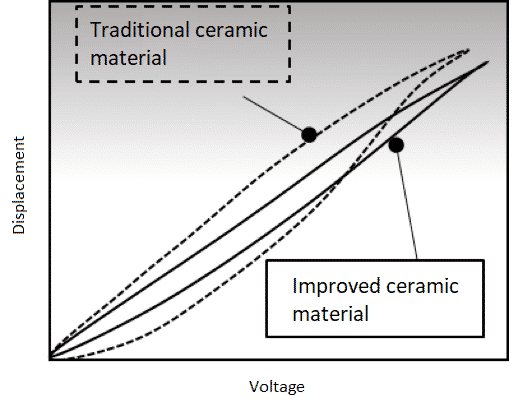
Conventional “super tweeters” are so-called as they reproduce sounds outside the audible range, but this Intime’s variation, thanks to the uncommon material selection in addition to their calibrations, has a different behaviour and reproduces overtones, effectively contributing to the highest-end part of the audible spectrum.
2 – Graphene coating
A graphene coating has been applied to the Dynamic Driver unit, which – always according to Intime – improves mid-high range frequencies reproduction power and definition.
3 – Stainless steel housings
Stainless steel has been adopted for the housings. Besides obvious robustness, the choice reportedly offers a significant impact on sound.
In general, the more solid & heavy a material is used, the better is unwanted extra vibrations suppression obtained on the housings, but at the expense of equally unwanted extra weight.
On Intime Sora 2 the adoption of stainless steel, the application of a heat treatment and a careful internal cavity shaping – according to Intime – turned into higher material rigidity, excellent vibration control, better sound transmission speed and – why not – scratch resistance too, all within a limited weight.
Well, weight is not feather-level in my books to be honest. I don’t have a subjective comfort problem with that, YMMV.
4 – HDSS
Another unique (patented, actually) technology adopted inside Sora 2, as much as inside Ti3 too, is called “HDSS” as in High Definition Sound Standard.
Its purpose is to suppress sound reflections inside the housing, resulting in cleaner output.
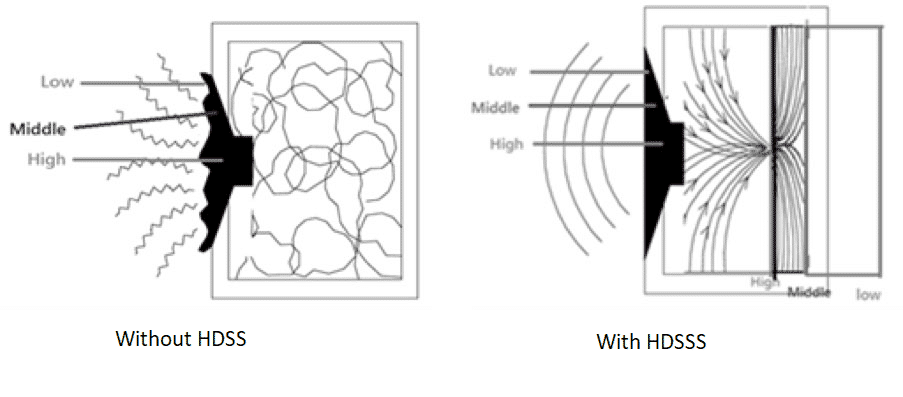
Some sound waves are commonly uncontrolledly reflected inside the housing, impacting onto the dynamic driver diaphragm, causing dissonance from the intended purpose. With HDSS technology, the sound inside the housings is more controlled and does not invest the diaphragm, allowing the dynamic driver to move only as a consequence to the signal source.
This – according to Intime – increases sound realism and decreases fatigue. It has a down side though: it tends to purge too much of the high frequencies off the dynamic driver vibration.
This is where a careful calibration between the resolution of the ceramic VST mentioned above and the mid-high range tuning of the graphene coated DD becomes vital, resulting in a bass with a solid outline, harmonious mid-high range and wide spatial expression – as in facts Insime Sora 2 does deliver, big time !
At-a-glance Card
| PROs | CONs |
| Sub-bass and mid bass quality. | Mids and especially male vocals could be more bodied. |
| Treble quality. | May require careful tip selection to avoid sibilance |
| Very good technicalities. | Fixed cable is a turndown for many (not me) |
Full Device Card
Test setup
Sony NW-A55 / Apogee Groove / Questyle QP1R – final E ML-size tips – Lossless 16/44.1 – 24/96 – 24/192 FLAC tracks.
Signature analysis
| Tonality | Intime Sora 2’s key identity is clean energetic musicality. The signature is a U whereon snappy, textured and detailed bass and highs compensate each other in presence most of the times (with an occasional bright-ish prevalence… sometime!), while each keeps setting the pace and the rhythm to deliver a very engaging and cohesive musical experience. |
| Sub-Bass | Nicely present, fast and detailed. A true pleasure. For my own taste, I’d have loved it even a further bit higher but I’m being subtle. |
| Mid Bass | Just a bit more elevated than sub-bass yet very present, fast, punchy, detailed. I love that. Similarly to sub-bass, a tad further elevation – keeping the same speed features – and I would call it perfect. |
| Mids | Not recessed nor forward in terms of elevation, clear and detailed, they might feel “on second light” as they lack some body – especially the lower ones. Globally, I can say mids and vocals are good, even very good, but I wouldn’t choose Intime Sora 2 a “vocal specialist” |
| Male Vocals | Present and well detailed but somewhat too lean for my tastes. Or maybe I’m pretending too much, difficult to say. Certainly, can’t expect cavernous male singers sounding like lions on Intime Sora 2 |
| Female Vocals | Better than males, a bit more forward and especially bodied, but still way south of flutey let alone buttery. |
| Highs | Energetic, clear, sparkly but never peaky, extended, somewhat airy, not overly sharp let alone zingy. Somewhat remember planar trebles. Depending on tracks they may come accross a bit more abundant than bass let alone mids, scanting the entire presentation temporarily into bright territory, but that’s it. Very well done – also considering the price we are talking about ! |
Technicalities
| Soundstage | Resaonably extended although not huge. Seems taller than wider actually. Not bad at all anyhow. |
| Imaging | Very good. Voices are corretly positioned on the space, often with good air amongst them. Thumbs up here too. |
| Details | Fast bass and snappy trebles offer a way above average amount of details, while always avoiding excesses. Cymbals & snare drums – which is what I listen to most often due to my jazz passion – get a special treat. Very nice. |
| Instrument separation | Separation and layering is very much above average for this price bracket. |
| Driveability | Benefits from moderate amping due to modest sensibility. Intime Sore 2 are also luckily directly supported by Apogee Groove in spite of their multi-driver nature |
Physicals
| Build | Stainless steel, with heat treatement and nice mirror finish. Not lightweight (not overly heavy either) |
| Fit | Fat bullet shape, easy to fit for all apart who hates the genre of course. As it almost always happens to me I had to fiddle a lot to find tip allowing for the correct insertion calibration to avoid sibilance. I finally settled onto final E’s ML size (my size on those is M actually – ML in this case supports a shallower but equally firm insertion). |
| Comfort | Very subjective. I personally find them extremely comfortable, also in spite of their relatively heavy wight. YMMV. I also prefer wearing them cable up, which is facilitated by silicon earhooks. About those, well… a pair is bundled inside Intime Sora 2 package, but final’s type-B are miles better (and that’s what I adopted of course). |
| Isolation | Intime Sora 2’s bullet shape, although quite “fat”, does not offer good concha shielding. Deeper insertion typically helps getting a stronger seal improving isolation from external noise too, but in my case I couldn’t opt for that to prevent sibilance. Some sound does also leak out from the vent. |
| Cable | Sadly just fixed, non-braided, 4-core oxygen-free copper, single-ended 3.5mm termination. I’m not overly demanding on this aspect, I know quite a few will consider the lack of replaceability a serious annoyance, especially once considering the great sound quality. |
Specifications (declared)
| Housing | Full stainless-steel |
| Driver(s) | Φ10mm graphene-coated Dynamic Driver woofer + laminated ceramic Vertical Support Tweeter (VST) |
| Cable | Fixed, non-braided 1.2m 4-core oxygen-free copper, with single-ended 3.5mm angled termination |
| Sensitivity | 102 dB |
| Impedance | 22 Ω |
| Frequency Range | 20-40000Hz |
| Package & accessories | 1 set of 4 pairs (S, M-, M+, L) Acoustune ET07 eartips, 1 pair of silicon earhooks and a snap-button leather strap |
| MSRP at this post time | JPY 6.499 ($61.55) |
Comments and conclusions
Intime Sora 2 represent a very good piece of japanese audio engineering and craftmanship.
Although not partaking to the ultra-budget price segment, I find them inexpensive enough to make for a no-brainer recommendation for whoever is in search of a clean, natural-timbred, energetic and musical IEM which I find particularly well paired to jazz and acoustic genres alike.
Very simplistically put, I might position them as a less expensive alternative to final A3000, or as a similar-priced, similar-quality, clearer-presentation complement to final E3000, which is the quite obvious driver-to-beat on that price level for pop, rock, songwriters etc.
Disclaimers
My Intime Sora 2 unit is not a loaner for review purposes, but was indeed a direct purchase. You can find them here.
Our generic standard disclaimer.
This article also appeared on my personal audio blog, here.
You find an INDEX of our most relevant technical articles HERE.







